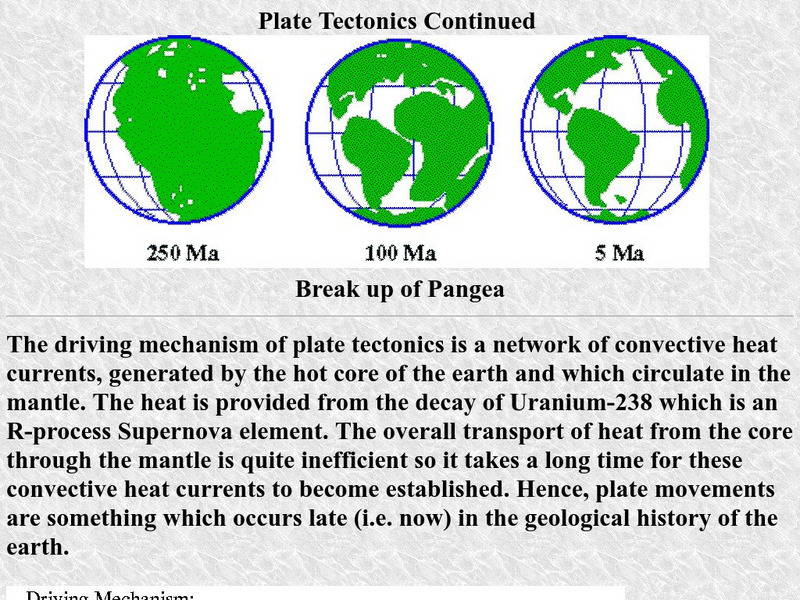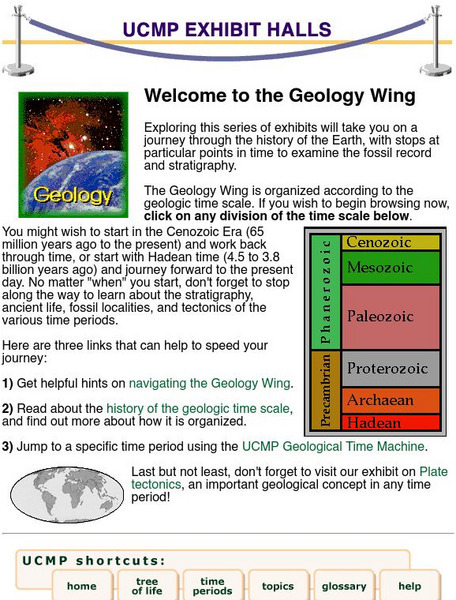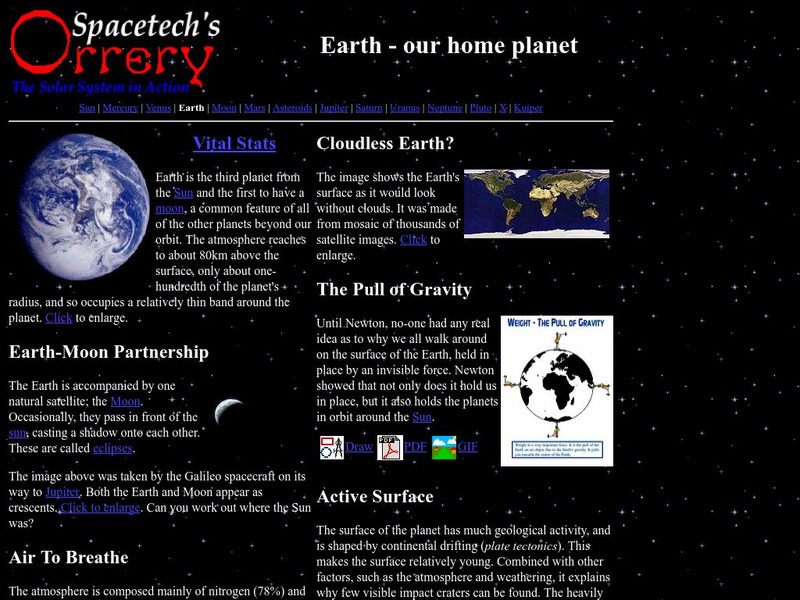CK-12 Foundation
Ck 12: Plix: Stress Types: Geological Stresses
[Free Registration/Login Required] This site includes the chance to label diagrams and answer a short quiz about geological stresses.
US Geological Survey
Usgs: Earthquakes Frequently Asked Questions
Use this resource to find answers to frequently asked questions about earthquakes.
Sophia Learning
Sophia: Earthquakes
A quick, introductory lesson about how earthquakes happen, and what impact these natural events have on life.
Sophia Learning
Sophia: Geology: Plate Tectonics
Listen to this podcast which explains the basics of plate tectonics on Earth. [0:39]
Sophia Learning
Sophia: Geology: Plate Tectonics
An basic introduction to plate tectonics and the Earth's processes related to this phenomenon.
PurposeGames
Purpose Games: Plate Tectonics
Gamers will test their knowledge of plate tectonics with this interactive. Know your divergent plate boundaries, hot spots, trenches, lithosphere, and other trivial facts of plate tectonics.
Annenberg Foundation
Annenberg Learner: Dynamic Earth Interactive
Delve into the structure of the Earth to learn what causes earthquakes, volcanoes, and more.
Libre Text
Libre Texts: Understanding Plate Tectonics
Scientists have a fairly good understanding of how the plates of the Earth move and how such movements relate to earthquake activity. Most movement occurs along narrow zones between plates where the results of plate-tectonic forces are...
Libre Text
Libre Text: Historical Perspective [Of Plate Tectonics]
Read here about the historical perspective of plate tectonics.
Libre Text
Uc Davis Geo Wiki: Mantle Thermal Plumes
The vast majority of earthquakes and volcanic eruptions occur near plate boundaries, but there are some exceptions. Learn here all about mantle thermal plumes.
PBS
Pbs: Mountain Maker, Earth Shaker: You Try It
What can a hard-boiled egg tell you about the Earth? Check this site out to learn. Be sure to click on "Plate Tectonics activity" for a graphic representation.
PBS
Wnet: Thirteen: The Earth at Work
This site from PBS provides a description of the mechanisms behind the plate movements, types of movements, and the resulting earthquakes, faults, and images and animations of several of the topics presented.
US Geological Survey
Usgs: The Himalayas: Two Continents Collide
This site from the U.S. Geological Survey explains how the Himalayas were formed by plate-tectonic forces. Includes a nice map to help visualize the theory.
Other
Paleomap Project
Virtual reality animation map showing continental drift from 200mya to the present. The animation map is small but effective in showing the positions of the land masses.
Enchanted Learning
Enchanted Learning: All About Plate Tectonics
Simple discussion of plate tectonics and Pangaea. Includes maps and interactives.
Oregon State University
Osu: Volcano World: Spreading Plate Boundaries
This page has pictures and descriptions of different areas on Earth where the plates are spreading. Also includes links to more information on slow, medium, and fast moving plates.
University of Oregon
The Electronic Universe Project: Plate Boundaries/plate Tectonics
Visit this site to learn more about the different types of plate boundaries. Includes color pictures and easy-to-understand examples of how and why plates move the way they do.
University of California
University of California Museum of Paleontology: Geology and Geologic Time
This site provides information about the geologic relationships of rock layers, as well as much about geologic time and the history of Earth.
Other
Spacetech's Orrery: Earth Our Home Planet
This site provides a very interesting overview of our home planet, Earth. Content includes a focus on the atmosphere, the pull of gravity, and the active surface.
Extreme Science
Extreme Science: How Old Is the Earth?
We say Earth is 4.6 billion years old, but how do we know? How do we measure its age? This article focuses on these questions and how long life has been on Earth.
University of Illinois
University of Illinois Urbana Champaign: About Antarctica: Plate Tectonics
Explanation of why Antarctica has fossils of ferns, amphibians, and reptiles. Gondwanaland is discussed and shown in an interactive map.
US Geological Survey
Central California Earthquake Hazards Project
Here is a review of the geology behind earthquakes and what is being done to predict the "Big One" on the San Andreas Fault.
Incorporated Research Institutions for Seismology
Iris: Seismic Tomography [Pdf]
Learn how seismic tomography imaging helps scientists understand the formation of the Earth's interior.
Incorporated Research Institutions for Seismology
Iris: Earthquake Machine: Basic One Block & Simple Graph Animated
Animation of the single-block "Earthquake Machine" model shows how "Forces, Faults, and Friction" interact. [0:16]



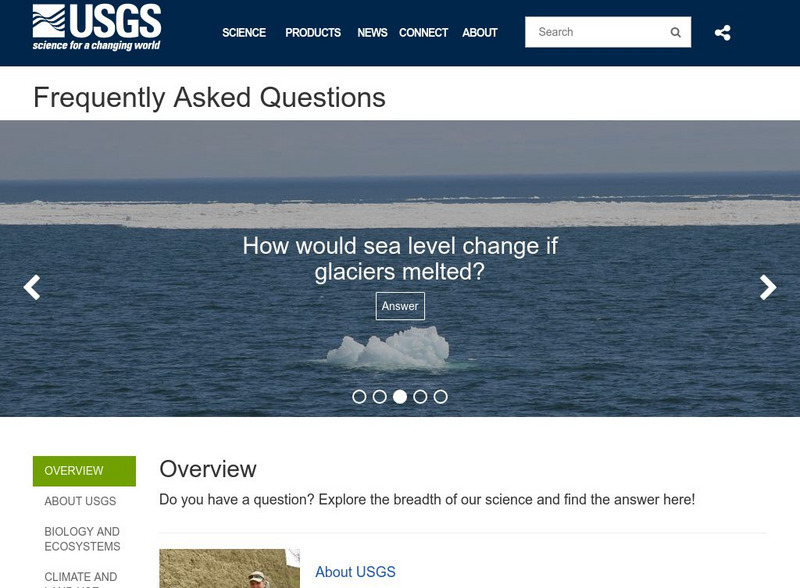

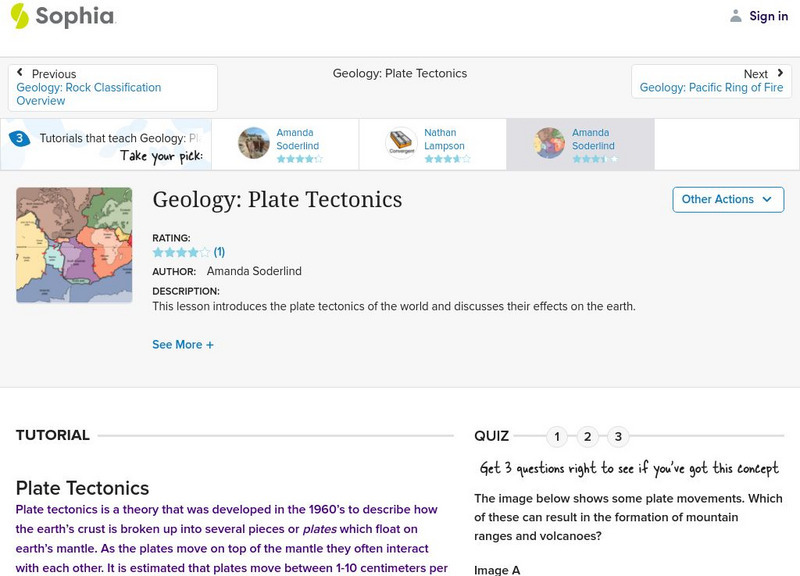

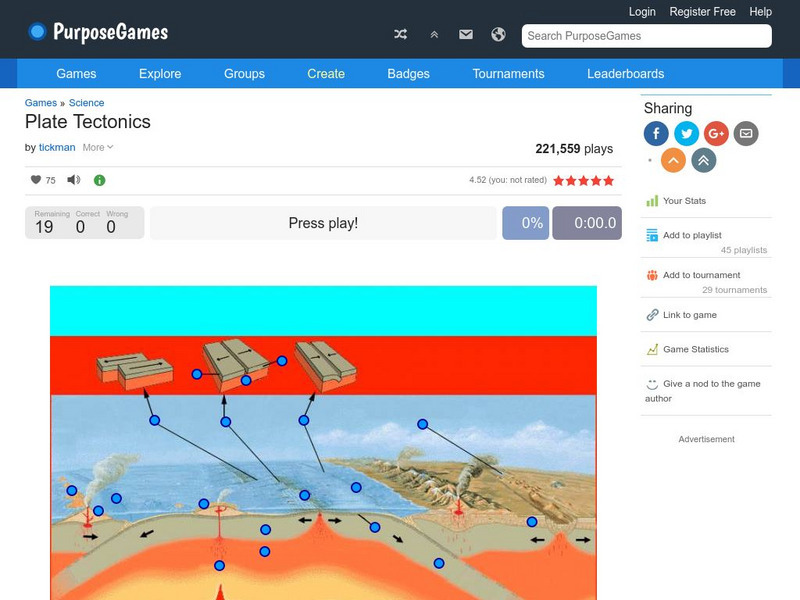

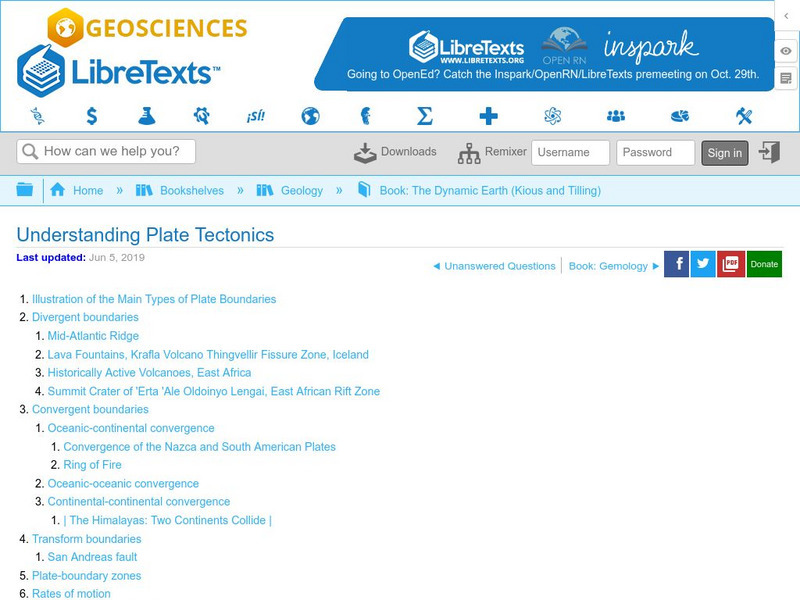
![Libre Text: Historical Perspective [Of Plate Tectonics] eBook Libre Text: Historical Perspective [Of Plate Tectonics] eBook](https://content.lessonplanet.com/knovation/original/234103-98d4b1b1275bce5d294f078f4912dc14.jpg?1661815153)







